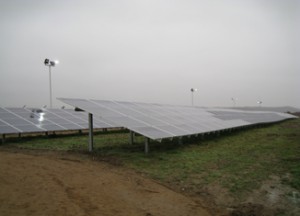 A new solar forecasting system could save the solar power industry hundreds of millions of dollars and make it easier for grid operators and utilities to integrate high penetration levels of variable resources like solar into the electric grid.
A new solar forecasting system could save the solar power industry hundreds of millions of dollars and make it easier for grid operators and utilities to integrate high penetration levels of variable resources like solar into the electric grid.
The new system, called Sun4Cast, was developed by scientists at the National Center for Atmospheric Research (NCAR) in Boulder, Colorado and claims to provide significantly more accurate solar forecasts than those provided by existing solar forecasting systems.
Forecasting solar irradiance is difficult because of the number of variables that can affect it, including air quality, the locations and types of clouds, relative humidity and other atmospheric conditions. Sun4Cast leverages a combination of advanced computer models, atmospheric observations, and artificial intelligence techniques to generate 0- to 6-hour nowcasts of solar irradiance and the resulting power production for specific solar facilities at 15-minute intervals. It also provides forecasts that extend out to 72 hours, allowing utility officials to make decisions in advance for balancing solar with other sources of energy.
Sun4Cast provides more accurate predictions of cloud cover and other atmospheric conditions that influence the amount of electricity generated by solar arrays than existing forecast methodologies. According to NCAR, the new forecasting system proved to be more accurate than existing solar forecasting systems by as much as 50% based on the results of several demonstration projects.
“The use of advanced forecasting of … future solar energy system output allows grid operators and utilities to proactively manage variable output, and thus integrating solar resources into the existing grid at lower costs to society,” according to a study by the Solar Electric Power Association.
High-penetration levels of renewable energy resources on the electric grid are creating new challenges for utility companies and grid operators due to their intermittent nature.
“These results can help enable the nation’s expanding use of solar energy,” said Sue Ellen Haupt, director of NCAR’s Weather Systems and Assessment Program, who led the research team. “More accurate predictions are vital for making solar energy more reliable and cost effective.”
Source: forbes.com


